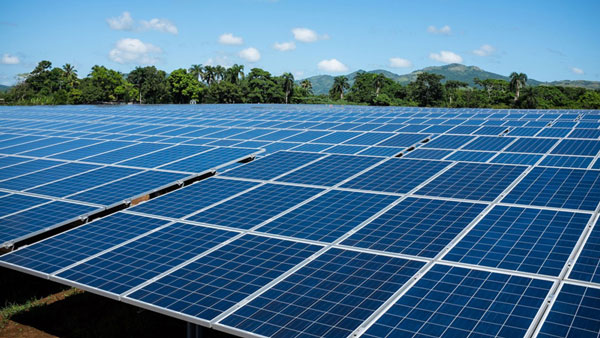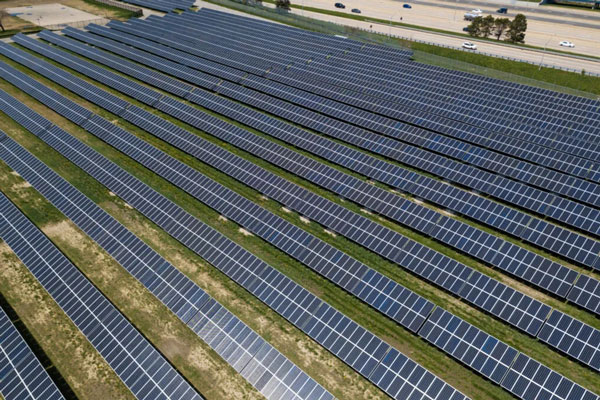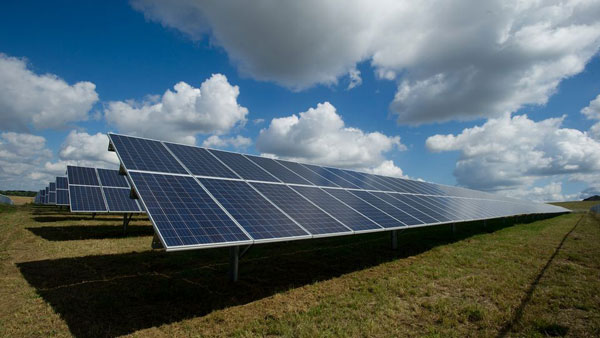Regular Cleaning and Maintenance
Cleaning of solar panels at least once a month is vital for sustaining the highest efficiency. Dust or foliage will accumulate, reducing the efficiency of sunlight absorption. Research shows that if solar panels are never cleaned, they may lose between 15 and 25 percent of their efficiency. Cleaning should provide a schedule to apropos the lifespan of the panel and maintain its use.
Cleaning Schedule
The determination to clean solar panels should depend on their surroundings environments, for instance: how close the area is to the dusty roads or how congested the area is with birds. The schedules also depend on the season for, say, monthly cleanings during summer when there are ample flowers or seeds for birds to flock. The dirt and unease of each area may determine if monthly cleaning is a viable schedule or if it is safe to go for quarterly cleaning. Once chosen, it places anticipation on inspection for damage or wear that would concerning accumulate.
Cleaning Materials
Homeowners should implement the use of mild soapy water and soft brushes to alleviate potentially scratching the panels or severe enough to damage protective coating. Over the market, there exists, cleaning services that help maintain the control of the accumulation and cleanliness of solar panels. These companies range from the use of purified to dirty water. The purified water minimizes risks of water damage to the surface of the serviced area. The dirty water is free to be non-reusable and does not the quality of the panels.
Efficiency Monitoring
Before and after cleanings, solar power output reading and documentation for future analysis should occur. The panels will help note the cleaning schedule or procedure integrated with let the owner know if all solar panels are operational. The monitoring panels seek information to denote performance matter. To maintain quick adjustment, the use of performance metrics software will also be utilized during inspections and systematic goals.
Professional Checks
An annual inspection and maintenance is strongly required. The professional maintenance should always include the examination for structure issues such as, frame corrosion, and, mounting hardware. Tamper-premise home inspectors can not only check efficacy, but also, safety in correlation to work conditions of install. The inspection will heighten worker understanding for solar installations and improved pnl to pnl studies, including electrical lines and circuitries.

Optimal Panel Placement and Installation
Correct placement and installation of solar panels are essential to optimize the effect of the alternative energy source and the amount of energy they produce. Geographic orientation, the angle of installation, and potential for shading due to other objects all play their role. Specifically, the study by the National Renewable Energy Laboratory shows that the efficiency of solar panels can improve by up to 20% with appropriate placement.
Assess Geographic Orientation
To ensure maximum exposure to the sunlight throughout the day, northern hemisphere panels should face south. This way, they receive the largest possible amount of solar radiation which guarantees high efficiency. Panels installed in specific regions might require some adjustments to the optimal orientation due to the characteristics of the area, higher latituded, or prevailing weather patterns.
Calculate the Optimal Tilt Angle
Ideally, the best tilt angle of your solar panels is equal to the latitude of your location. For instance, if your site is located at 35° latitude, the ideal angle for your panel is also 35°. This will allow the panel to receive the most of solar radiation during the peak sun hours, increasing its operational efficiency.
Account for Seasonal Changes
In the presence of significant differences between the summer and winter angles, mounting systems that can be altered with the seasons are particularly valuable. During winter, the sun takes a much lower path in the sky, and the ideal angle also changes. This way, setting up an appropriate adjustment for the off-peak season can increase solar collection by up to 10%.
Remember to Avoid Obstructions and Shading
Even some partial shading can cause serious output loses. No objects such as trees or buildings that can cause shading should be present in close vicinity to the solar panels, and certainly not during the highest amount of sun in the sky. To avoid some potential mistakes or oversights, software and site calculators such as solar pathfinders might be used in your planning.
Upgrade to High-Quality Solar Panels
To begin with, one of the first and easiest ways to minimize efficiency loss is to upgrade to high-quality solar panels. Usually, buyers consider the upfront cost more prominently than the long-lasting benefits and may prefer less expensive options available at the moment. Yet high-quality solar panels are generally equipped with advanced technologies that do not only increase the initial efficiency of the equipment but also ensure it remains on the same level for a longer period of service. For example, a typical panel with a PERC technology system gains up to 5% more efficiency, a number that will only keep increasing with years.
Choose Panels with Higher Efficiency
An attempt to choose a solar panel with a high efficiency rating seems like an almost commonsensical step. Certainly, the mechanism seems too obvious, so plenty of people faile to act on it. However, the changes the solar panels of high efficiency may produce in the amount of generated electricity, even given the same amount of sunlight, are truly remarkable. To be specific, a solar panel with an over 20% efficiency rating would generate substantially more energy than its less effective counterpart. The measure is especially beneficial for the areas the limited amount of space available for the installation of solar panels, as it implies that with the help of panels of high efficiency, the amount of energy generated can be increased without expanding the size of the installation.
Choose Durable Materials and High Quality of the Build
It is just as important to make sure that the solar panels selected by the user are of equally high quality in terms of materials used and the way they are built. The materials of the panels selected should be capable of withstanding entreme environmental factors such as UV light and radiation, winds, hail, freezes and submerged by triangle weight of sowing them in the farm. The best solar panels will, under harsh weather conditions, prove to be the ones most likely to keep their efficiency and the clients usually come with additional warranty that guarantees they last.
Prevent and Manage Degradation
Prevention and control of the degradation of the solar panels are fundamental for their efficiency and longevity. It could be attributed to a variety of reasons, such as environmental, material failure, or improper installation. Nevertheless, it is estimated that the rate of efficiency loss should be no more than 0.5 – 1 % per year . It is relatively easy to detect and the issue has to be addressed as soon as detected.
Regular Inspection
It is recommended to conduct bi-annual inspections to determine micro-cracks, delamination, or yellowing of panels. It should be examined both in terms of actual material damage, and performance – with the use of system monitoring tools. In the vast majority of cases, the system deterioration is observed before the performance degradation could be noted. It allows to determine and eliminate causes of the efficiency reduction and prevent further significant damage.
Use of Quality Protective Components
It is important to ensure that PV inverters, carrying systems, and wiring are of high-quality and mode-matched. For instance, the use of UV-inhibiting wiring and corrosion-resistant mounting systems significantly decreases the risk of system failures. If the mounting system fails, other components are subject to erratic oscillation and may develop cracks. Moreover, proper mounting often prolongs the optimal operating conditions of the PV.
Thermal Stress
Solar panels are especially prone to thermal-induced efficiency loss. Installation could be arranged to “elevate the panels slightly” to improve air circulation and exhauste the temperature. It is estimated that the difference of several centigrade can result in more than ten percent increase in heat-induced efficiency loss by the panel. In turn, panels maintaining low temperatures, particularly in states where freezeloads are allowed, show long-term higher efficiency.
Preventive Maintenance
The regimen and preventive steps can be implemented to sustain panels in the best condition. It is necessary to periodically clean the panels, fasten electrical connections, and check for corrosion or decreased transmission rates.

Monitor and Address Environmental Factors
Ensuring maximum efficiency of the solar panels largely depends on the proper management of environmental factors. Numerous environmental conditions affect the efficiency of these renewable energy sources, including exposure to dust, pollen, increased air pollution, and diverse weather alterations. It has been established that when dust and pollution are common in the area, the effectiveness of the panels can reduce by up to 30%. To address the existing situation and develop the most appropriate measures, one will need to focus on the technology and environmental context.
Utilization of Advanced Monitoring Systems
To understand the effects that the environmental deterioration has on the effectiveness of solar panels, it would be reasonable to deploy advanced monitoring systems. By monitoring the impact of specific environmental factors such as dust and humidity, one will gather the relevant data that can be used to adjust the rates of environmental control. Sensors can be mounted on solar panels to gather data on these elements in real time.
Development of the Weather Adaptation Strategy
In the current context, developing the proper strategy for managing the adverse effects of weather conditions will be essential. For example, if the exposure levels become too high, which will then trigger the need to clean the panels multiple times a week, it will be appropriate to ensure that the devices are equipped with the automatic tilt function. As a result, the panels will shift following the sun, collecting light with the maximum degree of efficiency and avoiding its prevented delivery to the panels by adverse weather.
Addressing High Levels of Airborne Pollution
To address the specified concern, I will also need to consider including high-efficiency air filtration or air purification systems in the vicinity of solar installations. It is also crucial to ensure that all local cleaning companies and maintenance workers are sanitizing panel surfaces sufficiently regularly. It is vital to remember that in such areas, current rates of shceduled cleaning instance for this region is every two months or once every six to eight weeks.
Adaptation to Seasonal Changes
Finally, it will be reasonable to ensure that a seasonal approach to adjusting the maintenance and operating practices. For example, in spring and summer, it will be reasonable to avoid high pollution and dust levels, whereas in fall and winter, specific devices should be used to address the challenge. Rather than allowing building and cleaning systems to address the challenge in a random manner, it will be reasonable to develop the specified approach and achieve the required operational results.



